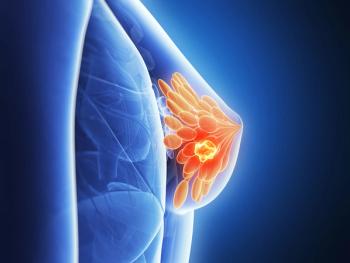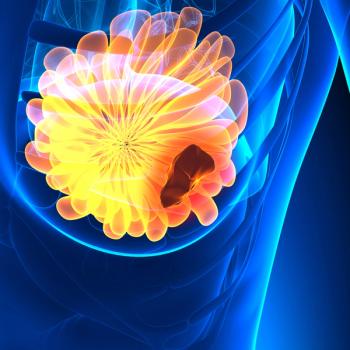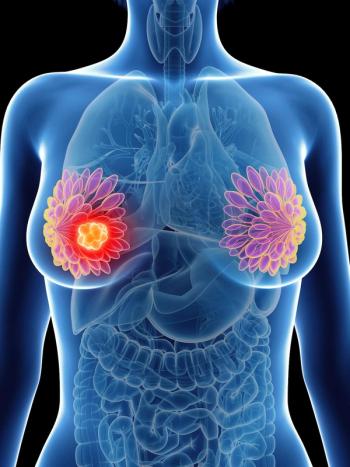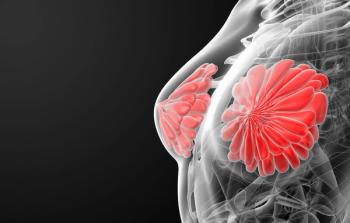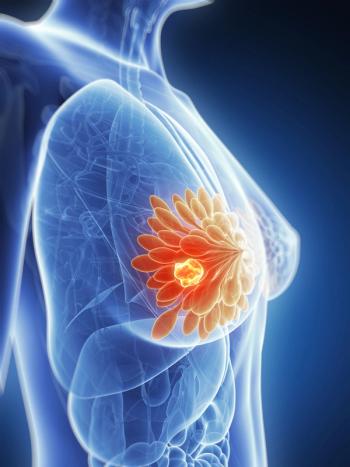
Oncology NEWS International
- Oncology NEWS International Vol 12 No 2
- Volume 12
- Issue 2
MR Spectroscopy IDs Breast Cancers, Node Involvement
ORLANDO-A computer-based diagnostic system for breast cancer using magnetic resonance spectroscopy (MRS) plus a statistical classification strategy (SCS) is ready for acceptance testing in the clinic, Australian researchers said at the Era of Hope Department of Defense Breast Cancer Research meeting.
ORLANDOA computer-based diagnostic system for breast cancer using magnetic resonance spectroscopy (MRS) plus a statistical classification strategy (SCS) is ready for acceptance testing in the clinic, Australian researchers said at the Era of Hope Department of Defense Breast Cancer Research meeting.
"We’re addressing two of the major clinical problems that face the management of breast disease," said Cynthia L. Lean, PhD, deputy head, Department of Magnetic Resonance in Medicine, University of Syd-ney, Institute for Magnetic Resonance Research (IMRR). "The first problem is the limitation of histopathology, and the second is the need for fast and accurate assessment of prognostic factors, in particular lymph node involvement."
She noted that although histopathology is "the gold standard," clinical outcomes often differ from those predicted by histopathology. "It’s a qualitative analysis dependent on the clinician. Also, sampling errors occur. Histopathologists routinely assess less than 1% of the tissue. Because disease is a multistep process and there are a limited number of ways a cell can change appearance, early cancer or premalignant changes may not be detected during evaluation," she said.
MRS analyzes chemicals present in a small suspension of cells removed via fine needle aspiration from a suspicious area of the breast, to identify areas of increased chemical activity indicating malignancy. "Within 20 minutes of putting the cellular sample into the spectrometer, we are able to obtain a chemical profile," Dr. Lean said. If a malignancy is found, a computer program evaluates the likelihood of lymph node involvement.
Initially, the team compared the MRS results visually and could tell benign from malignant disease with a sensitivity of 95% and a specificity of 96%. But researchers were able to look at only about 50 of the 4,096 data points in each spectrum. Thus, the team, working with the Institute for Biodiagnostics at the National Research Council of Canada, developed the SCS software to aid in data acquisition and classification.
The SCS develops classifiers to recognize patterns containing complex information. These patterns would not be
obvious by visual inspection of the spectrum. "We wanted the clinician to obtain a confidence in the diagnosis," she said, "and we wanted to overcome deficiencies in standard pattern recognition techniques." SCS uses a three-stage process. The first is feature selection, in which the discriminating regions are pulled out of the spectrum. The second stage uses these subregions to develop classifiers yielding probabilities of class assignment for the individual spectra. If during the classifier development stage, the sample cannot be classified as either benign or malignant with a probability of greater than 75%, stage three is activated, wherein the aggregate of two independent classifiers are used to develop a computerized consensus diagnosis.
The system has been tested in several databases of cells from patients undergoing breast biopsy for suspicious lesions. "The technique is very powerful," Dr. Lean said. "We can determine malignant or benign with an overall accuracy of 96% and a crispness of 98%. (Crispness indicates a class probability greater than 75%.) Just as important, but more surprising to us, we were able to predict, from the fine needle biopsy, if the lymph nodes were involved with an accuracy of 95% and a crispness of 95%." The technique also was able to identify vascular invasion, a possible prognostic factor, but clinicians have expressed less interest in this aspect of the research, she said.
"MRS combined with SCS provides information not currently available from biopsy of the primary tumor," Dr. Lean concluded. "We can determine not only the pathology but also the vascularization and lymph node involvement." In the future, she expects that MRS will offer patients accurate diagnosis, including nodal involvement, without surgical biopsy or node excision.
The IMRR has worked with manufacturers to develop a user-friendly MRS system that can be installed in clinics. The final step will be acceptance testing, in 2003, at three sites, one each in Australia, Sweden, and the United States. Investigators are still waiting for funding to include one person from the research team at each location. Dr. Lean recognizes that the team will likely have only one chance to prove to clinicians that the technology works and aims to proceed slowly and carefully to ensure success.
Articles in this issue
almost 23 years ago
Some Activity for Gefitinib in Heavily Pretreated Breast Canceralmost 23 years ago
Brachytherapy Results Similar for Blacks, Whitesalmost 23 years ago
Dose-Dense Chemo Ups Survival in Node+ Breast Canceralmost 23 years ago
ODAC Wants More Data on Expanded Casodex Indicationalmost 23 years ago
SuperGen Submits First NDA Module for Pancreatic Cancer Drugalmost 23 years ago
Two Added to ONI’s Oncology Nursing Editorial Advisory Boardalmost 23 years ago
Bortezomib Active in Relapsed/Refractory Myelomaalmost 23 years ago
Telomerase Potential Cancer Biomarkeralmost 23 years ago
Developing Targeted Therapy More Difficult Than AnticipatedNewsletter
Stay up to date on recent advances in the multidisciplinary approach to cancer.


